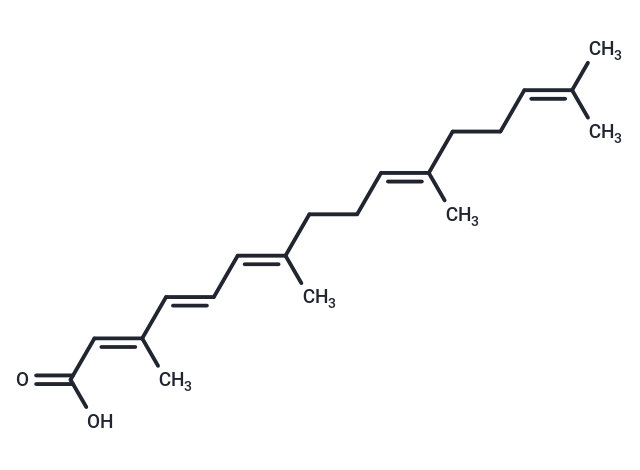Shopping Cart
- Remove All
 Your shopping cart is currently empty
Your shopping cart is currently empty


| Pack Size | Price | Availability | Quantity |
|---|---|---|---|
| 1 mg | $34 | In Stock | |
| 2 mg | $47 | In Stock | |
| 5 mg | $80 | In Stock | |
| 10 mg | $128 | In Stock | |
| 25 mg | $243 | In Stock | |
| 50 mg | $423 | In Stock | |
| 100 mg | $629 | In Stock | |
| 500 mg | $1,350 | In Stock | |
| 1 mL x 10 mM (in DMSO) | $89 | In Stock |
| Description | Peretinoin (NIK333) is an oral acyclic retinoid with a vitamin A-like structure that targets retinoid nuclear receptors such as RXR and RAR. |
| In vitro | Peretinoin (10-40 μM; 12-72 hours) exhibits suppressed SPHK1 expression after 24 h treatment, even at 10 μM and more prominent after 72 h peretinoin treatment [1]. Peretinoin (5 μM; 24 hours) up-regulates the expression of LC3B-II and increases autophagy flux in mouse primary hepatocytes [2]. Peretinoin inhibits HCV RNA amplification and virus release by altering lipid metabolism with an EC50 of 9 μM [3]. |
| Cell Research | Cell Line: Mouse primary hepatocytes (MPH) and the human HCC HepG2 cell line. Concentration: 5 μM. Incubation Time: 24 hours [2] |
| Alias | NIK333 |
| Molecular Weight | 302.45 |
| Formula | C20H30O2 |
| Cas No. | 81485-25-8 |
| Storage | Powder: -20°C for 3 years | In solvent: -80°C for 1 year | Shipping with blue ice. | |||||||||||||||||||||||||||||||||||
| Solubility Information | DMSO: 45 mg/mL (148.78 mM), Sonication is recommended. | |||||||||||||||||||||||||||||||||||
Solution Preparation Table | ||||||||||||||||||||||||||||||||||||
DMSO
| ||||||||||||||||||||||||||||||||||||

Copyright © 2015-2024 TargetMol Chemicals Inc. All Rights Reserved.